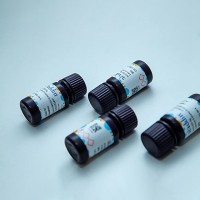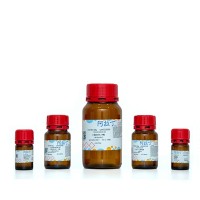Analysis of Histoblasts
互联网
656
The epidermal cells, a derivative of ectoderm during embryogenesis of insects, contribute to the distinct cuticular pattern and form of the different stages that appear during their ontogeny. The type of cuticular products is the result of gene expression of the individual epidermal cells that lie immediately underneath these outgrowths (1 ). In hemimetabolous insects, the larval epidermal cells (LECs) present at the time of hatching from the egg and their descendants are responsible for the different cuticular patterns seen in the nymph and adult. In contrast, in many holometabolous insects, such as Drosophila , the distinct and different cuticular patterns exhibited by the larva and adult have a dual orgin; that of the larva is derived from the LEC and that of the adult is derived from the imaginal discs (2 ). The prospective integument of the adult head, thorax, genitalia, and analia is derived from imaginal discs (3 –5 ). Each of the adult abdominal segments is derived mainly from three pairs of diploid histoblast nests (i.e., a pair of anterior dorsal [ADN], posterior dorsal [PDN] and ventral [VN] nests), located among the polytene LEC of the abdominal segments of the larva (see Fig. 1 , Fig. 2 A–C , and 3 A,B ). In addition, there is a pair of inconspicuous spiracular nests (SN) in each of the abdominal segments; during metamorphosis these nests (see Fig. 3 C ) develop into the paired spiracles on the lateral sides of the adult abdominal segment (3 ,6 –9 ).




Fig. 1. Camera lucida drawing of a whole mount of the epidermis of the fourth abdominal segment of a 44 h old larva (same segment as shown in Fig. 2 A ). The whole mount was prepared after dissecting the larva mid-ventrally, treated with Feulgen’s reagent, which tints the nuclei and shows the distribution of the paired anterior dorsal (ADN), posterior dorsal (PDN), and ventral (VN) histoblast nests among the larval epidermal cells (LECs). HO, ventral bands of hooks; SC, cluster of small cells of unknown function; PT, polytene cell in the midst of the VN. (From ref. 7 , reproduced with permission of Springer-Verlag.)

Fig. 2. (A ) Whole mount of the right fourth abdominal hemisegment of a 44 h old larva showing the anterior dorsal (ADN), posterior dorsal (PDN), and ventral (VN) nests of histoblasts (enclosed by the dashed line), ventral band of hooks (HO), and cluster of small cells (SC) of unknown function. (B ) Whole mount of the abdominal epidermis of the second segment of a 44-h-old larva showing the left anterior dorsal histoblast nest (ADN, enclosed by dashed line) among the larval epidermal cells (LECs). (C ) Tangential section passing through the epidermis of the third abdominal segment of a 17-h-old larva showing the ventral nest (VN, enclosed by dashed line). See the polytene cell (PT) in the midst of the histoblasts, and the surrounding LECs. All preparations were stained with Feulgen’s reagent and counterstained with fast green. (From ref. 7 , reproduced with permission of Springer-Verlag.)

Fig. 3. (A ) Appearance of the anterior dorsal (ADN), posterior dorsal (PDN), (B ) ventral (VN), and (C ) spiracular nests (SN) of wild type (18 h after pupariation) in whole-mount preparations stained with Feulgen’s reagent. (From ref. 9 , reproduced with permission of Springer-Verlag.)









